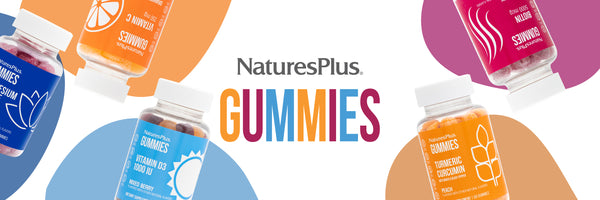Muscle cramps can be a real pain, especially those calf-gripping “charley horses” that strike in the middle of the night.
If you’ve noticed an increase in muscle cramps after your workout, then you’re most likely wondering why they’re happening and—more importantly—how to make them stop. Let’s begin by explaining with what causes them.
What Causes Muscle Cramps
There are several reasons why muscles cramp up. Here are some common culprits:
- Overexertion, which can cause lactic acid to build up in muscles
- Overstretching, which can lead to spasms
- Prolonged sitting or inactivity (excessive sitting can also lead to deep vein thrombosis, a blood clot in the legs that travels to the lungs)
- Dehydration
- Diuretics, which help the body excrete excess fluid
- Circulatory problems†The information provided is not an endorsement of any product, and is intended for educational purposes only. NaturesPlus does not provide medical advice and does not offer diagnosis of any conditions. Current research on this topic is not conclusive and further research may be needed in order to prove the benefits described. The conditions and symptoms described may be indicative of serious health problems, and therefore should be brought to the attention of a qualified healthcare practitioner.
- Diabetes†The information provided is not an endorsement of any product, and is intended for educational purposes only. NaturesPlus does not provide medical advice and does not offer diagnosis of any conditions. Current research on this topic is not conclusive and further research may be needed in order to prove the benefits described. The conditions and symptoms described may be indicative of serious health problems, and therefore should be brought to the attention of a qualified healthcare practitioner.
- Hypothyroidism†The information provided is not an endorsement of any product, and is intended for educational purposes only. NaturesPlus does not provide medical advice and does not offer diagnosis of any conditions. Current research on this topic is not conclusive and further research may be needed in order to prove the benefits described. The conditions and symptoms described may be indicative of serious health problems, and therefore should be brought to the attention of a qualified healthcare practitioner.
- Imbalance of minerals, which include calcium, magnesium, potassium and sodium†The information provided is not an endorsement of any product, and is intended for educational purposes only. NaturesPlus does not provide medical advice and does not offer diagnosis of any conditions. Current research on this topic is not conclusive and further research may be needed in order to prove the benefits described. The conditions and symptoms described may be indicative of serious health problems, and therefore should be brought to the attention of a qualified healthcare practitioner.
Home remedies can offer relief from occasional muscle cramps. You should speak with your healthcare provider if severe cramping occurs frequently.
Easing Muscle Cramps
When a cramp strikes, you want to ease the pain fast. But what works for one person may not work for another. Here are some helpful ways to kick the cramp:
- Rubbing or massaging the muscle
- Flexing your foot toward your knee
- Stretching your leg
- Walking, if possible
- Standing on tiptoes
- Applying a warm towel or heating pad can relax the muscle (although cool towels work better for some people)
It’s not uncommon to still be sore after the cramp calms down. Here are some ways to relieve sore muscles:
- Try taking willow bark or ginger
- Apply topical arnica
- Take a warm bath with Epsom salt and try adding a few drops of ginger, lavender or birch essential oil
To lessen thigh cramps, drink plenty of fluids and move around as much as possible when in confined spaces, such as an airplane cabin. To avoid foot cramps, try shifting your weight every 10 minutes when standing.
Preventing Muscle Cramps
Once you’ve had a muscle cramp, you don’t ever want to experience another. Here are some tips for keeping cramps at bay:
- Stay hydrated, especially when working out or traveling
- Do shorter workouts and avoid overexertion
- Wear loose clothing that won’t restrict blood flow
- Take a yoga or tai chi class to increase flexibility
- Skip high heels and flip-flops
Nothing beats a good night’s sleep, but those late-night spasms can jolt you out of bed without any warning. Here are some tips to reduce nighttime cramps:
- Do gentle stretches
- Ride a stationary bike
- Avoid tight sleepwear that bends toes downward
†The information provided is not an endorsement of any product, and is intended for educational purposes only. NaturesPlus does not provide medical advice and does not offer diagnosis of any conditions. Current research on this topic is not conclusive and further research may be needed in order to prove the benefits described. The conditions and symptoms described may be indicative of serious health problems, and therefore should be brought to the attention of a qualified healthcare practitioner.The information provided is not an endorsement of any product, and is intended for educational purposes only. NaturesPlus does not provide medical advice and does not offer diagnosis of any conditions. Current research on this topic is not conclusive and further research may be needed in order to prove the benefits described.
The conditions and symptoms described may be indicative of serious health problems, and therefore should be brought to the attention of a qualified healthcare practitioner.
Like this article? You’ll love our weekly newsletter
sign up here!
**These statements have not been evaluated by the Food and Drug Administration. This product is not intended to diagnose, treat, cure or prevent any disease.













































































